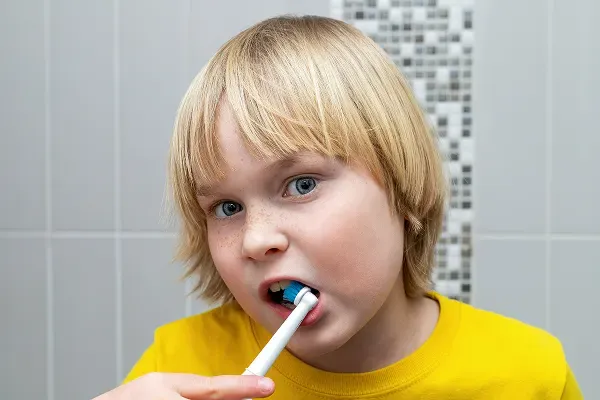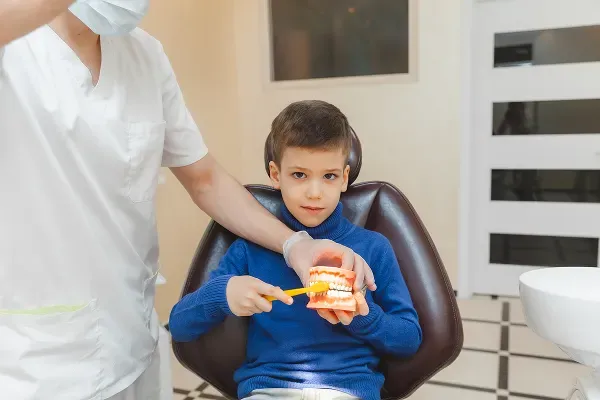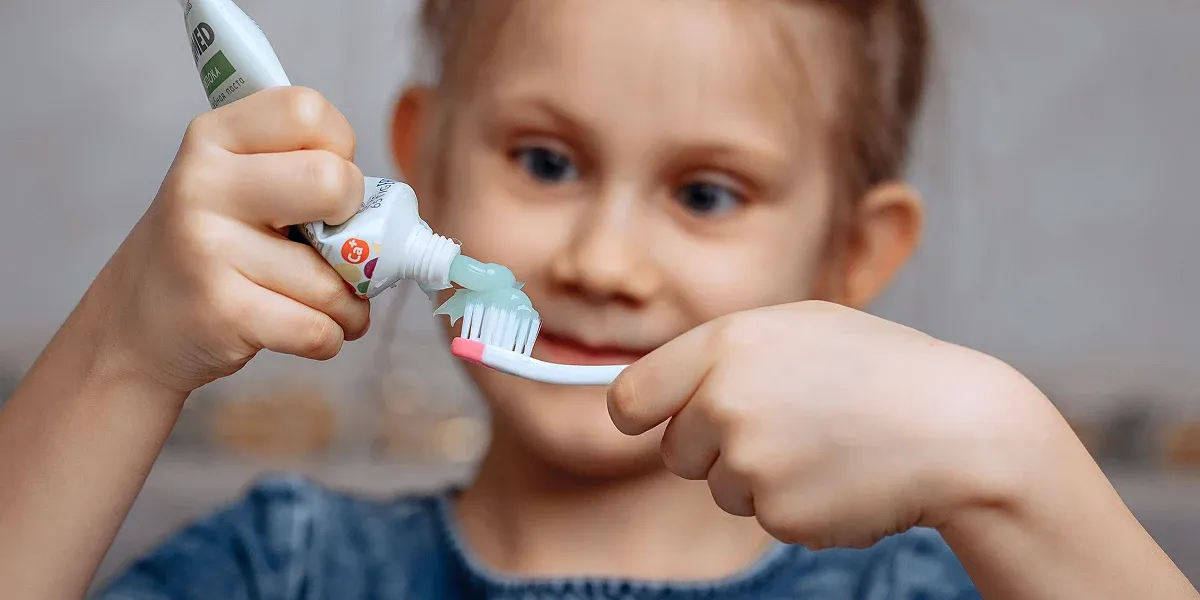
Fluoride Treatment Myths Every Parent Should Stop Believing
As parents, we're constantly flooded with advice on how to raise our children, especially when it comes to their health. Among the many debated topics is fluoride for kids—a subject surrounded by controversy, confusion, and conflicting opinions. Unfortunately, fluoride myths are now more common than ever, especially with the rapid spread of misinformation on social media and forums.
Understanding fluoride treatment myths is essential for making informed decisions about your child’s oral health. In this blog, we’ll be debunking fluoride myths, clearing up common fluoride misconceptions, and giving you the straight fluoride facts—backed by science and recommended by dental professionals.

1. Fluoride Is Unsafe and Toxic – The Biggest Misconception
One of the most persistent parent fluoride myths is that fluoride is unsafe for children. This misconception often stems from online conspiracy theories and misinterpreted data. While it’s true that excessive exposure to any substance can be harmful, the fluoride risks at the low levels used in drinking water and dental treatments are minimal and thoroughly researched. Scientific evidence consistently shows that fluoride is safe when used appropriately, especially under the supervision of dental professionals.
What Science Actually Says About Fluoride Safety
Fluoride is a naturally occurring mineral found in water, soil, and even certain foods. Public health organizations such as the CDC and World Health Organization have praised community water fluoridation as one of the greatest achievements in modern public health. The American Dental Association also supports fluoride use, noting its safety and effectiveness. In clinical settings, fluoride treatments are tailored to a child’s age and cavity risk, ensuring both fluoride safety and effectiveness without overdose.
2. Fluoride Causes Major Health Problems Like Autism or Cancer
Another widely shared yet scientifically unfounded myth is the supposed connection between fluoride and serious conditions like autism, thyroid disorders, or cancer. These beliefs often spread through personal stories online, not through verified research. Unfortunately, such misinformation can fuel unnecessary fear and avoidance of beneficial treatments.
Debunking Fluoride Myths with Real Research
Decades of long-term studies show no credible evidence linking approved fluoride levels to systemic illnesses. A 2022 review published in Community Dentistry and Oral Epidemiology found no statistically significant relationship between fluoride exposure and chronic health conditions in children. Understanding the distinction between fluoride facts and online speculation is critical. Trusting peer-reviewed research and dental professionals helps combat fluoride misinformation and ensures your child receives safe, effective care.
3. Fluoride Is Only Necessary if a Child Already Has Cavities
One common fluoride misconception is that it’s only needed after cavities appear. Many parents believe fluoride is a reactive treatment, when in reality, it’s a powerful preventive strategy that protects developing teeth before decay sets in.
Fluoride Benefits Go Beyond Damage Control
Fluoride works by strengthening tooth enamel, making it more resistant to acids that cause decay. It can also help reverse early signs of demineralization, stopping small cavities before they grow. Regular fluoride treatments reduce the risk of future cavities by up to 40% in children. The fluoride benefits extend well beyond fixing damage—they help ensure it doesn’t happen in the first place.
4. Brushing with Toothpaste is Enough—No Need for Extra Fluoride
While brushing twice daily with fluoride toothpaste is essential, it doesn’t replace the value of professional fluoride treatments—especially for children at higher risk of cavities due to dietary habits, genetics, or braces.
Why Topical Fluoride Treatments Still Matter
Fluoride toothpaste contains relatively low fluoride concentrations designed for daily use, but in-office fluoride treatments provide a stronger dose that bonds effectively with enamel. This long-lasting protection is especially important for kids who consume lots of sugar or wear orthodontic devices. Relying on toothpaste alone may not offer enough defense. Think of professional fluoride as an extra layer of protection—one that greatly boosts your child’s oral health defenses.
5. Natural Remedies Like Coconut Oil or Herbal Pastes Are Better
In recent years, more parents have turned to natural alternatives in hopes of avoiding fluoride. While this may seem appealing, substitutes like coconut oil, baking soda, or charcoal often lack scientific validation and can even cause harm if misused.
Separating Wellness Trends from Evidence-Based Care
Despite their popularity, most natural remedies offer little to no cavity-fighting power and can damage enamel when used incorrectly. According to the American Academy of Pediatric Dentistry, fluoride remains the gold standard in preventive care. Debunking fluoride myths means looking beyond online trends and trusting proven treatments. While the idea of going “all-natural” may be tempting, your child’s oral health requires science-backed solutions.
6. Fluoride Builds Up in the Body and Stays Forever
This myth about fluoride risks is often based on a misunderstanding of how fluoride interacts with the body. Some fear it accumulates and causes long-term harm, but research shows otherwise.
Fluoride Safety in Long-Term Use
The majority of fluoride consumed is eliminated through urine. It temporarily binds to bones and teeth, where it helps to strengthen them—a benefit, not a danger. No evidence suggests that therapeutic fluoride levels create a toxic buildup in the body. In professional care, both dosage and frequency are carefully controlled, ensuring fluoride safety for kids and peace of mind for parents.
7. Fluoride is Just a Marketing Gimmick Dentists Use to Upsell Services
A growing number of parents believe fluoride treatments are unnecessary and used by dentists merely to increase profits. This myth reflects broader mistrust in healthcare and a lack of understanding about how fluoride fits into preventive care.
Fluoride Treatment Myths vs. Evidence-Based Practice
In reality, fluoride is not a luxury—it’s a clinically proven tool recognized by the CDC, WHO, and ADA. Dentists follow strict treatment protocols based on a child’s cavity risk, age, and oral hygiene habits. Many public health programs even offer fluoride at no cost. Far from a sales tactic, fluoride is a cost-effective, science-backed method for preventing tooth decay—especially in children.
8. If My Water Is Fluoridated, My Child Doesn’t Need Treatment
While fluoridated water provides an excellent foundation for cavity prevention, it doesn’t eliminate the need for professional fluoride treatments—particularly for kids with elevated risk.
Why Extra Protection Is Sometimes Necessary
The fluoride concentration in public water is typically low and not tailored to individual needs. Some families also rely on bottled or filtered water, which may lack fluoride entirely. In-office treatments offer targeted, high-concentration applications that strengthen enamel more effectively. This fluoride misconception overlooks personal dental risk and assumes a one-size-fits-all approach. Water fluoridation is helpful, but not always enough on its own.

9. Talking to Your Child’s Dentist About Fluoride
Parents deserve to feel confident when making decisions about their child’s oral care. If you’re unsure about fluoride treatments, open communication with your pediatric dentist is essential.
Helpful Questions to Ask:
- Is my child at high risk for tooth decay?
- Is our local water supply fluoridated?
- How often should my child receive professional fluoride treatment?
- Are there signs that my child needs extra fluoride protection?
These questions can help clear up fluoride myths and allow your dentist to provide recommendations based on your child's unique dental profile.
Final Thoughts
From social media influencers to online forums, fluoride treatment myths continue to spread rapidly, causing confusion and fear among well-meaning parents. However, decades of scientific research and clinical evidence have consistently proven the fluoride benefits in protecting children's teeth. Understanding the difference between facts and misinformation is key to making informed health decisions. Fluoride is not a threat—it's a safe, effective tool that helps prevent tooth decay and strengthen enamel when used appropriately. By staying informed, asking your child’s dentist the right questions, and focusing on evidence-based care, you can confidently navigate the noise and prioritize what truly matters: your child’s oral health. Trusting real science over viral myths is one of the best decisions any parent can make.
Contact your kids' dentist in Stockton, Dr. Sajjad Rizvi, D.D.S. at Happy Kids Dental, to know more about Fluoride Treatment Myths Every Parent Should Stop Believing.
Resource:
Fluoride Magic: Stronger Smiles for Life Fluoride Benefits for Kid
*This media/content or any other on this website does not prescribe, recommend, or prevent any treatment or procedure. Therefore, we highly recommend that you get the advice of a qualified dentist or other medical practitioners regarding your specific dental condition*
Subscribe To Our Newsletter
Get Updates And Learn From The Best


